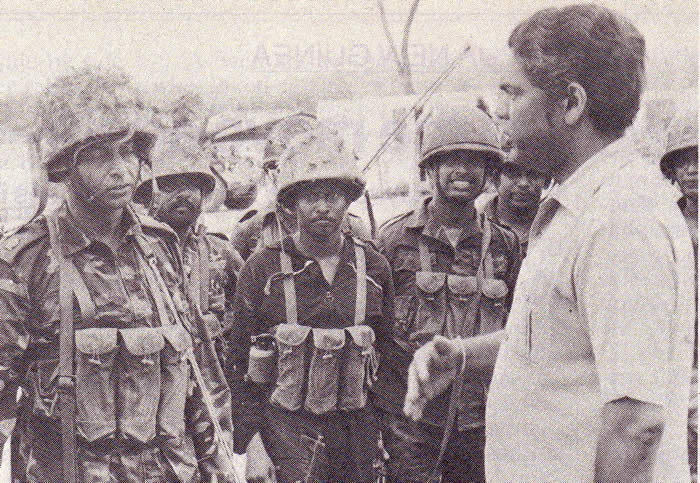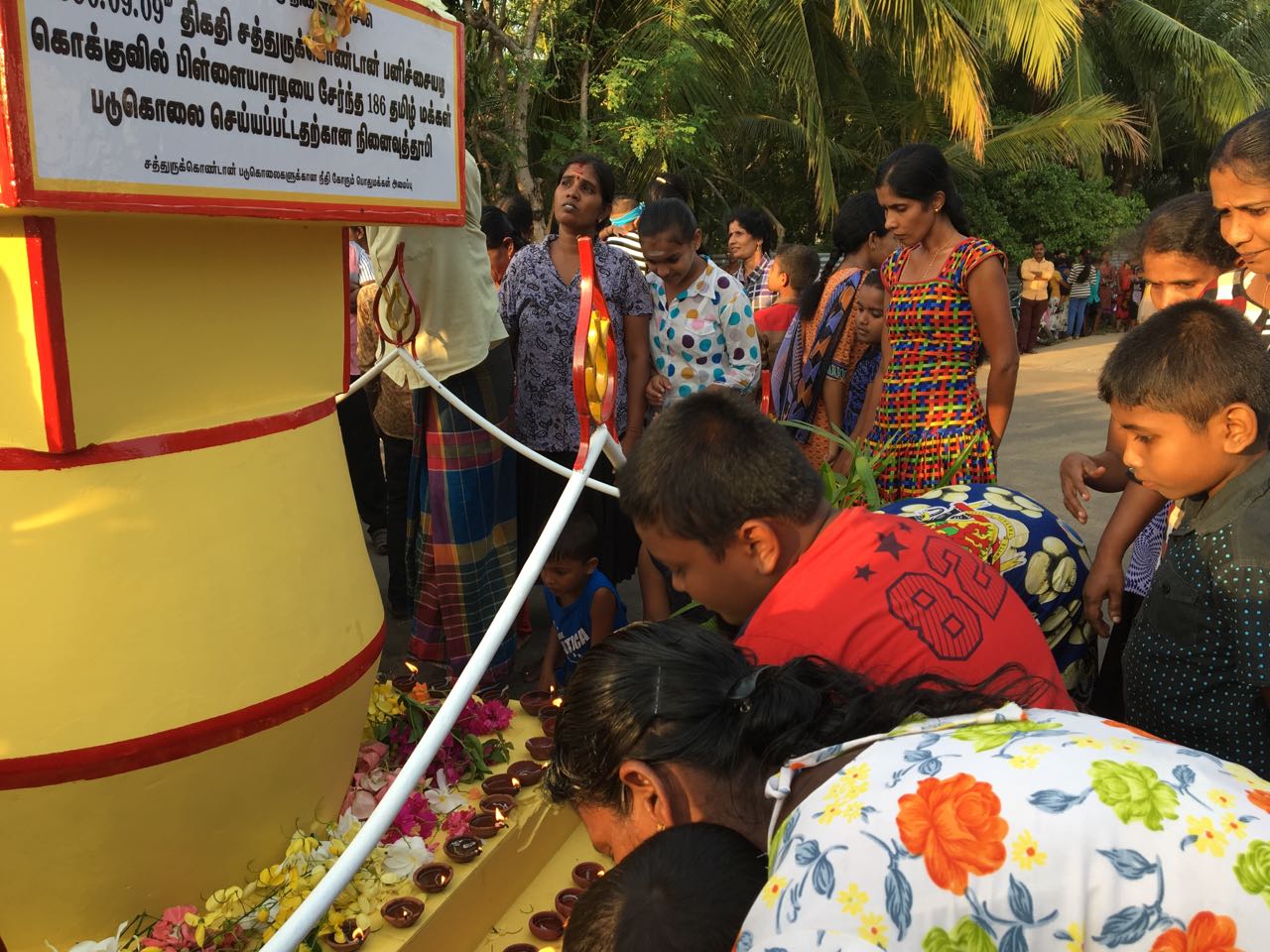
Athulathmudali with Sri Lankan troops.
Australia’s former High Commissioner, Howard Debenham, has recalled his close relationship with then Sri Lankan president Ranasinghe Premadasa and other Sinhala politicians who held notoriously racist views, as part of a new memoir entitled “Waiting ‘round the Bend”.
Debenham arrived in Sri Lanka in 1992, where he said his objective was to “to get close enough to Premadasa for him to listen to Australia's views on human rights, trade and investment”.
He reports that after their first meeting at the presidential mansion, “…we got along well. He made it clear he would be pleased to see more of me, one-on-one”. “My relationship with the President grew and the bilateral relationship between Sri Lanka and Australia prospered,” he commented.
Debenham was posted to Sri Lanka, as the military took on a brutal armed conflict against Tamil militants. In his memoir, he describes the massacres allegedly perpetrated by the LTTE in Alinchipotana and Palliyagodela in 1992, which he claims led to Australia’s denouncing of the LTTE “at my instigation”. However, there is no mention of the government-sanctioned violence against Tamils in previous years.
For example, in 1990, 194 Tamil civilians from Sathurukondan and surrounding villages were murdered by the soldiers of the Sri Lankan army. The massacre was carried out under the presidency of Ranasinghe Premadasa. On September 5th, 158 Tamils were killed via the assistance of Sri Lankan soldiers, Muslim homeguards, and pro-government paramilitaries.

Sathurukondan massacre commemorated in 2018.
However, according to TNA MP Selvam Adaikkalanathan, “Whenever massacres by Sri Lankan armed forces took place, the government of the day covered them up, and supported such actions by its forces. Then the governments tried to hoodwink the people by appointing commissions of inquiry.”
"When such commissions got close to finding out the truth," he said, "the inquiry would be inordinately delayed, citing several false reasons, and eventually the commission would provide a report without completing its proper inquiry, without holding anyone accountable. This situation allowed the continuation of such massacres of Tamil people as the people behind such actions were allowed to go scot-free.”
Meanwhile, diplomat also recounted his relationship with Lalith Athulathmudali, and “my friend” Gamini Dissanayake, both of whom had reputations as hard-core Sinhala nationalist politicians.
Athulathmudali, served as Sri Lanka’s national security minister and was involved in overseeing security operations and covering up massacres committed by the military. He was reportedly instrumental in ensuring former members of Britain’s elite Special Air Services Regiment and agents of Israel’s domestic intelligence agency, Shin Bet, trained Sri Lankan security forces, and supported the military use of a ‘scorched earth’ policy in the Tamil homeland.
See more on Athulathmudali from Tamil Nation here.
Dissanayake, meanwhile was one of several high profile Sri Lankan leaders in Jaffna, whilst soldiers burnt down the Jaffna Library and the tens of thousands of rare manuscripts it housed in an act that has been described as cultural genocide. Premadasa would later claim Dissanayake and other UNP leaders were responsible. In 1983, just two years later, he once more would come to the fore, accused of instigating anti-Tamil pogroms and the murder of Tamils, weeks before the Black July massacres were to take place.
See an extract from "Sri Lanka - 'Paradise' in Ruins," (Sri Lanka Co-ordination Centre, Kassel, 1983) below.
The town was closely guarded by the army. All vehicles were checked. Bus conductors had orders not to transport Tamils. Minister Gamini Dissanayake came from Colombo to Nuwara Eliya to hold a meeting with party members. The day before, M.P. Herath Ranasinghe had arrested precautiously (sic) some well-known rowdies. Soon after the end of Gamini Dissanayake's party meeting they were released. These people went out immediately, well-equipped with petrol, iron rods and other kinds of weapons, and tried to attack two Tamil priests in town. They managed to escape. Without having succeeded they moved on - another mob joined up with the first one. They laid a ring of petrol around a Tamil shop which was then burnt. They were supported in this by the army who supplied them with gallons of petrol. During the day nearly all Tamil-owned shops were burnt. Mrs. Herath Ranasinghe ordered the army to disperse the looters - but it was already too late. The Member of Parliament was banished from town under a hail of insults. Tamil people who walked the streets were beaten by soldiers. The fire brigade which stood waiting was hindered by the army and the Sinhalese mob in doing its job... Shops which had not been burnt by the mob were set fire to by the army. Around noon Nuwara Eliya was like a sea of flames.
The Sinhala politician had a track record of anti-Tamil remarks dating back to his role as the minister in charge of the Mahaweli Project. He would later oppose peace talks with the LTTE and then-Prime Minister Chandrika Kumaratunga and called for a military offensive in the North-East.
Read more from Debenham on the Bay Post-Moruya Examiner here.


No comments:
Post a Comment
Note: only a member of this blog may post a comment.